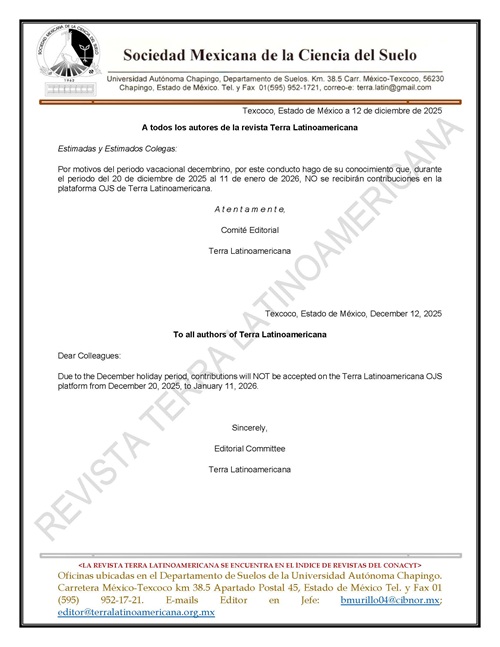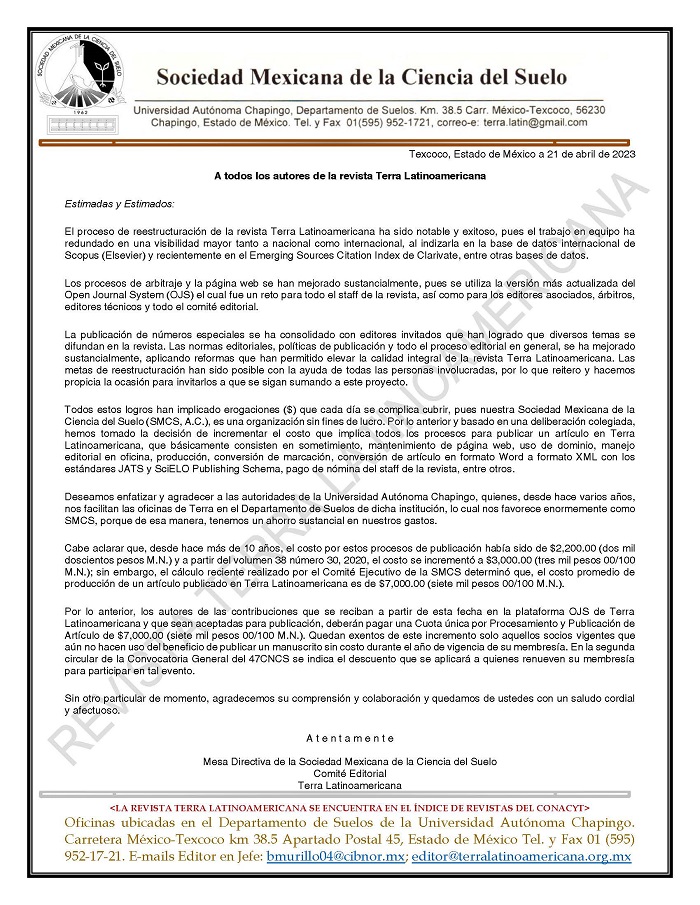Physiological and genetic analysis of a mapping population responsiveness to plant growth-promoting Azospirillum in wheat
DOI:
https://doi.org/10.28940/terra.v41i0.1589Keywords:
agronomic traits, genes, QTLs, microsatellitesAbstract
Azospirillum brasilense is a plant growth-promoting rhizobacteria (PGPR) with the potential of being employed as an inoculant to decrease the use of chemical fertilizers. We investigated the ef fect of A. brasilense inoculation on a doubled haploid population derived from Opata / WSHD67.2(257) cross and detected Quantitative Trait Loci (QTL) for seven agronomic traits. The population was segregated, concerning their response to inoculation, into three subgroups: neutral, positive, and negative in a proportion of 60:25:15. A total of 18 major QTL and 83 minor QTL controlled the expression of measured traits. Nineteen QTL showed pleiotropic characteristics; chromosomes 5A, 7A, 7B, and 7D were distinguished as those with QTL controlling four of the seven phenotypes measured. The sequences of nearest markers to major QTL detected synteny to rice sequences that codified for at least 38 candidate genes described and discussed as a first step to understanding the interaction of wheat with A. brasilense.
Downloads
Publication Facts
Reviewer profiles N/A
Author statements
- Academic society
- Terra Latinoamericana
- Publisher
- Mexican Society of Soil Science, C.A.

















